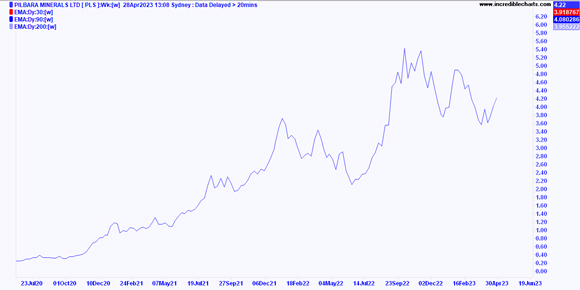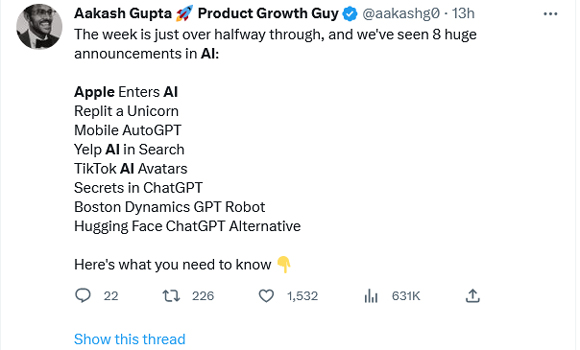As my colleague, Ryan Clarkson-Ledward, dryly noted last Thursday:
‘If we were to put our cynical hat on for a moment, we could argue that AI is just the latest buzzword fad for tech to latch on to.
‘After all, it was around this time last year that ‘Metaverse’ was doing something similar. Today, almost all interest in that technology has dried up, despite some exciting developments in the sector.’
Look, I get that sentiment.
We’ve seen no end of ‘fads’ come and go over the past few years.
Cannabis, lithium, blockchain, metaverse, uranium…these are just a few areas which have boomed for a while, only to fall back down just as sharply.
And yet…
Over time, many of these sectors have quietly made a comeback and made good on their early promise.
And I expect big money will be made in each of these areas on their second coming.
But the best example I can give you is probably the rise, fall, and rise again of the lithium industry…
Lessons from the lithium bull
I remember trading lithium stocks back in 2015.
This was well before electric cars were on most folk’s radar and they were seen by ‘serious investors’ as a speculative fad.
It was only really Tesla Inc [NASDAQ:TSLA] that was pushing forward with the idea in any serious way.
And most folks thought the Elon Musk-led EV push was complete folly.
Musk himself recalls a meeting with Warren Buffett’s partner Charlie Munger in 2009 where Munger proceeded to tell him ‘all the ways Tesla would fail’.
Musk responded:
‘I told him I agreed with all those reasons and that we would probably die, but it was worth trying anyway.’
The share price of Tesla rose from US$1.59 to hit a high of US$381 over the next decade.
But back to the 2015 lithium opportunity…
Despite the haters, the lithium sector went on a stunning 12-month run over 2015 and 2016 driven mostly by Tesla’s growth.
The world was suddenly waking up to the possibility of EVs going mainstream and lithium-ion batteries were going to be in steep demand.
Or so the hype went.
But as the haters and doubters continue to scoff, traders and investors piled in anyway.
I personally remember getting into stocks like Pilbara Minerals [ASX:PLS] and seeing them take off like this:
|
|
| Source: Incredible Charts |
The share price of PLS rose from around five cents in early 2015 to a high of 81 cents a year or so on.
But then the music stopped.
Over the next 16 months, the share price fell to a low of 29 cents.
In late 2017, there was another brief rally where lithium stocks shot up to new highs.
But again, this was a false dawn and stocks like PLS spent the next two years in a prolonged downtrend.
Many investors who bought at the highs of this early hype were now sitting on huge losses. I don’t doubt many sold out in disgust too.
Then in 2020, this happened:
|
|
| Source: Incredible Charts |
From a low of 15 cents, PLS now sits at around $4.20. Amazingly, that exponential move came in less than three years.
And there’s a whole host of lithium stocks that did the same thing.
What’s this got to do with AI then?
A simple framework
Well, the lithium story is a very common pattern you’ll see play out in all exponential trends.
And my gut feeling is we’ll see it happen again with AI. But with a twist, as I’ll explain at the end…
Generally, the pathway of investor psychology as a new idea takes hold is best reflected by something called the Gartner Hype Cycle.
It looks like this:
|
|
| Source: Treasury Today |
You can see the pattern here closely mirrors the behaviour of stocks in a new technology. It rises fast at first, only to fade just as quickly.
But then, eventually, it starts a more sustainable rise as the technology proves its initial promise.
Heres’ the thing…
If you can recognise where we’re at in this ‘hype’ cycle, you can make money all along the curve.
With AI, we’re clearly in that first phase where ChatGPT has triggered a wider awareness of AI technology.
Now, at this point of any new technology, people get caried away with the possibilities.
Imaginations run wild, and huge claims are made.
Like this one:
|
|
| Source: Big News Network |
And this one from accountancy firm PWC:
‘AI could contribute up to $15.7 trillion to the global economy in 2030, more than the current output of China and India combined.’
It’s not surprising that, at this stage, everyone wants a piece of the action.
Entrepreneurs and businesses eagerly pile in to grab their share of the cash investors are willing to throw at it.
And yet…
Despite the early potential on offer, every new technology generally takes more time to develop than investors first imagine.
So, if you get into early-stage AI companies now, make sure you take some profits off the table on any stock price rips.
Because after the first stage, there will be a point where the buzz fades away. At least for a while.
That second phase — the downturn phase before we get to the final growth phase — is the point where picking good stocks in a sector matters the most.
Most new tech is a game of winner take all.
And if you manage to nail one or two of these eventual winners, you could be riding the ‘Apples’ and ‘Googles’ of the next decade.
I don’t doubt there’s life-changing wealth on offer right now in AI.
The curveball
There’s one potential curveball to the Gartner model of growth when it comes to AI.
You see, unlike most new tech, there may be no significant pullback at all this time!
The truth is, we’re seeing AI advances being made in real time before our very eyes.
For a stunning example of what people are up to, check out this short film clip generated entirely via text-based AI tools.
It’ll blow your mind…
This process is unlike, say, electric cars or cannabis products. With those technologies, there is a big lag between the early hype phase and the actual end product.
But with AI, there seems to be amazing new ideas cropping up every day!
Announced in just the last week:
|
|
| Source: Twitter |
No company big or small wants to be left behind here.
And my gut feeling is that well before the end of this decade, AI will be as ubiquitous and widespread as smartphones are today.
It’s a story you can’t afford to ignore.
Good investing,
 |
Ryan Dinse,
Editor, Money Morning
PS: My colleague, Callum Newman, is one step ahead of the curve on this. He’s already using AI to help with his small-cap stock picking process. It’s early days, and certainly doesn’t eliminate risk, but he’s getting some great results. But if it does its job, it should help you to ride the wave and get in AND out at the right times in any booming small-cap sector, including AI. You can see how he’s doing it here.
![Pilbara Minerals [ASX:PLS]](https://daily.fattail.com.au/wp-content/uploads/2023/05/MM20230501_1_580.jpg)

![Pilbara Minerals [ASX:PLS]](https://daily.fattail.com.au/wp-content/uploads/2023/05/MM20230501_3.jpeg)



